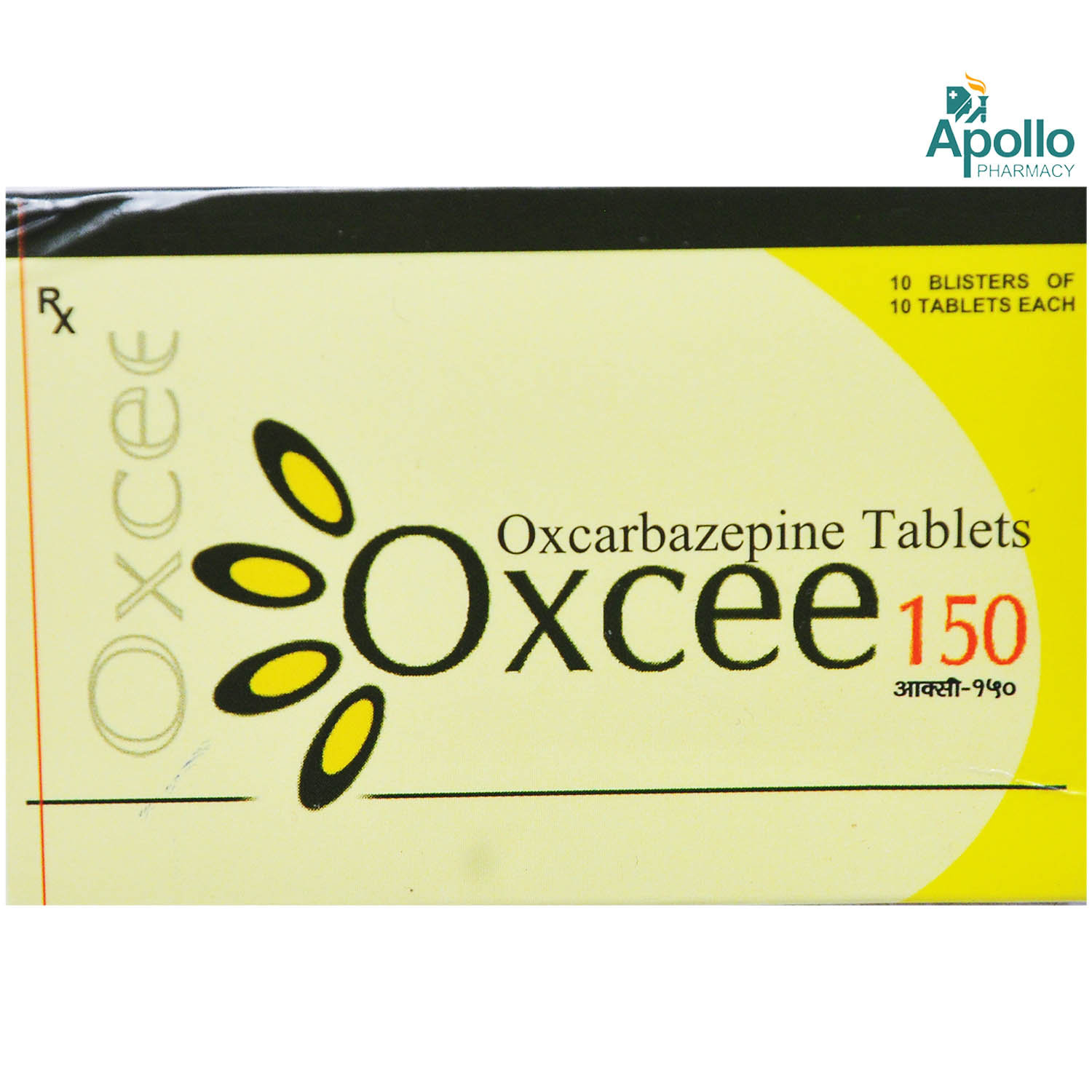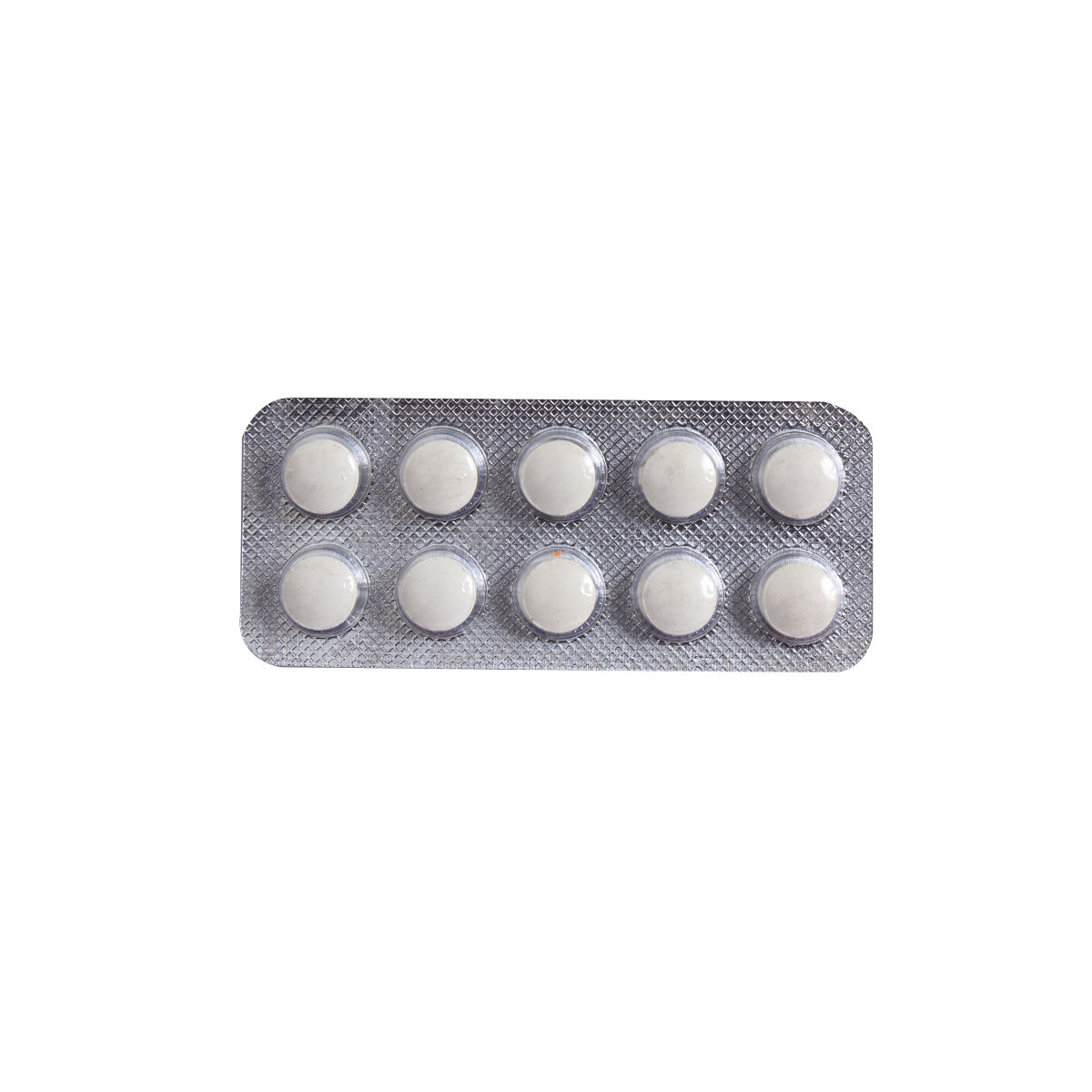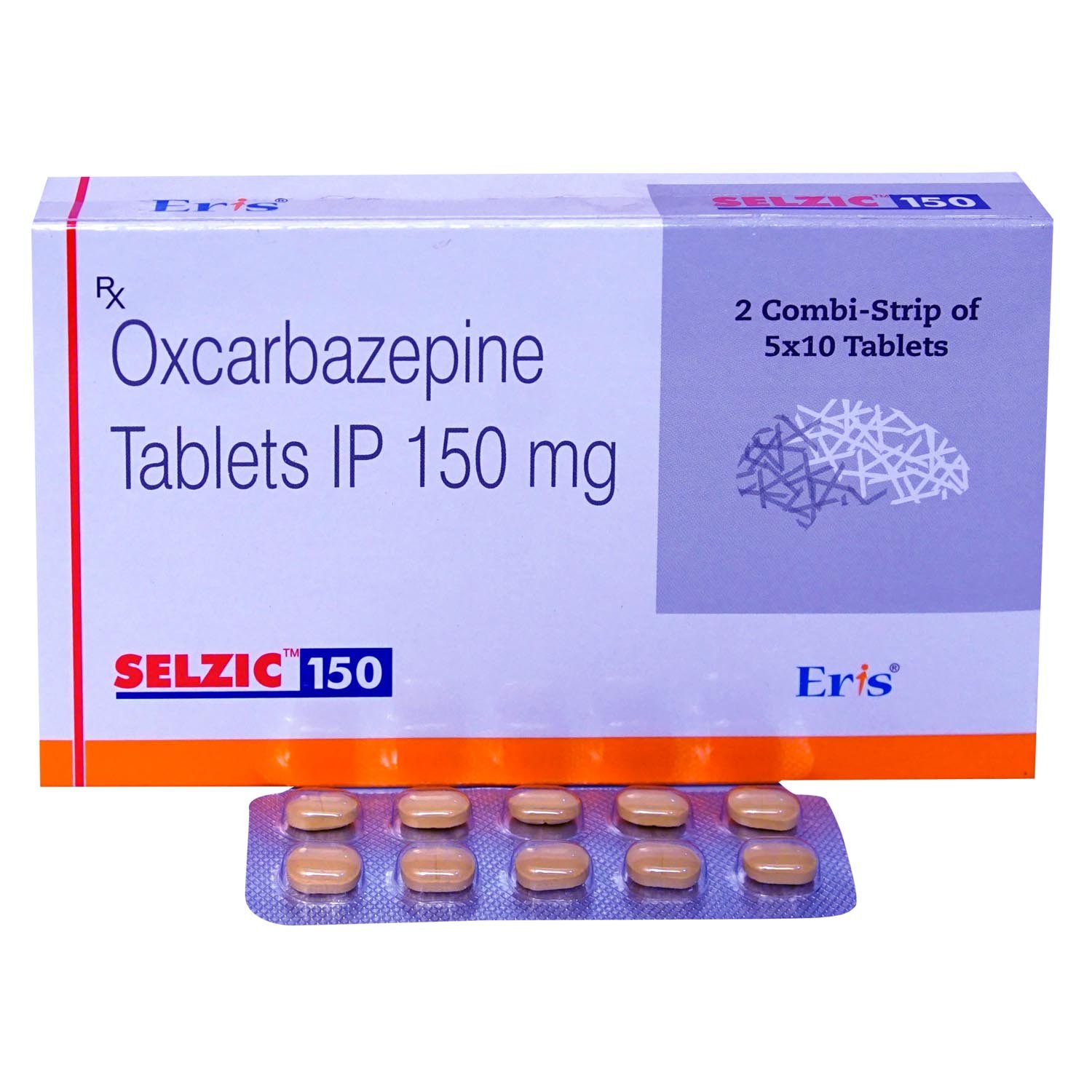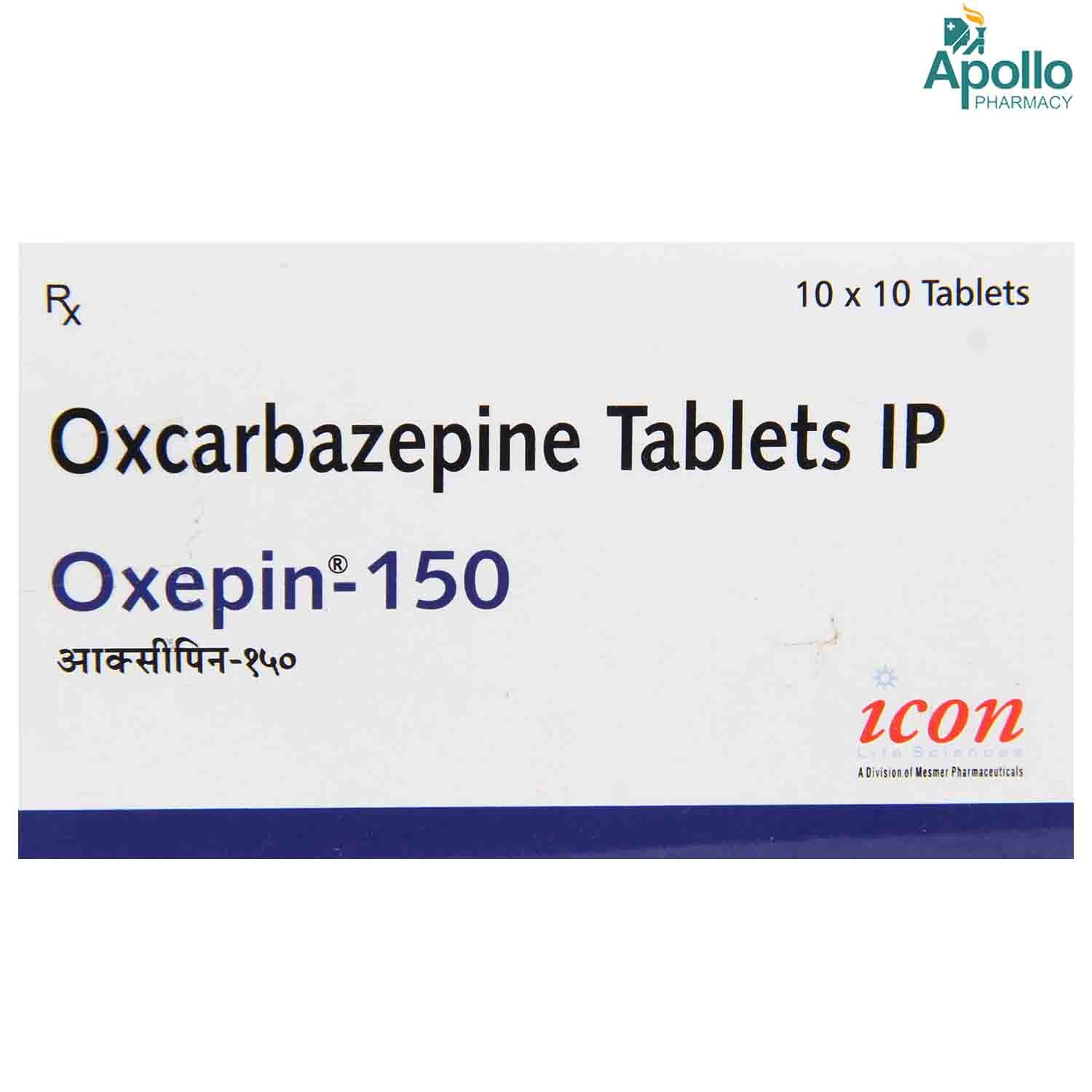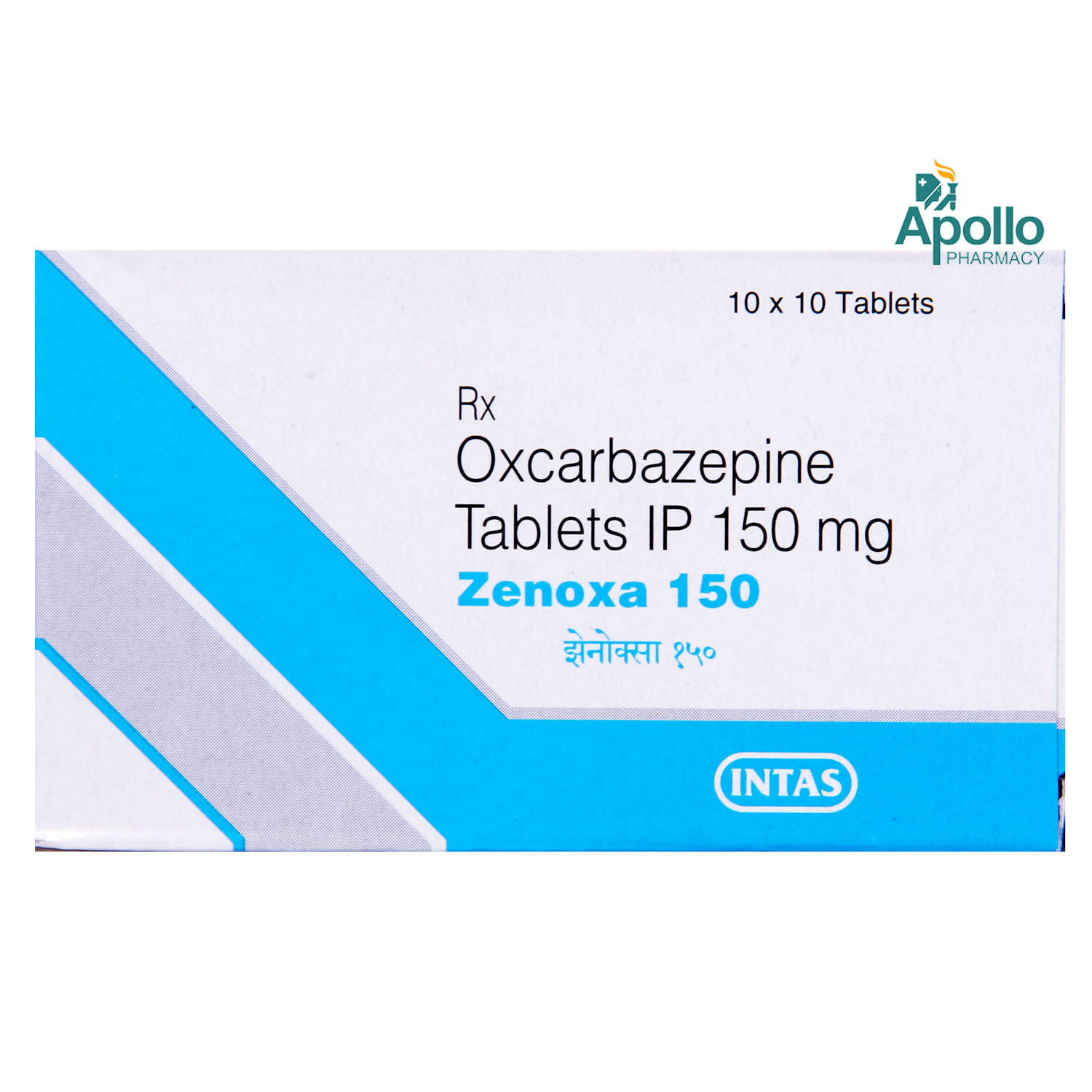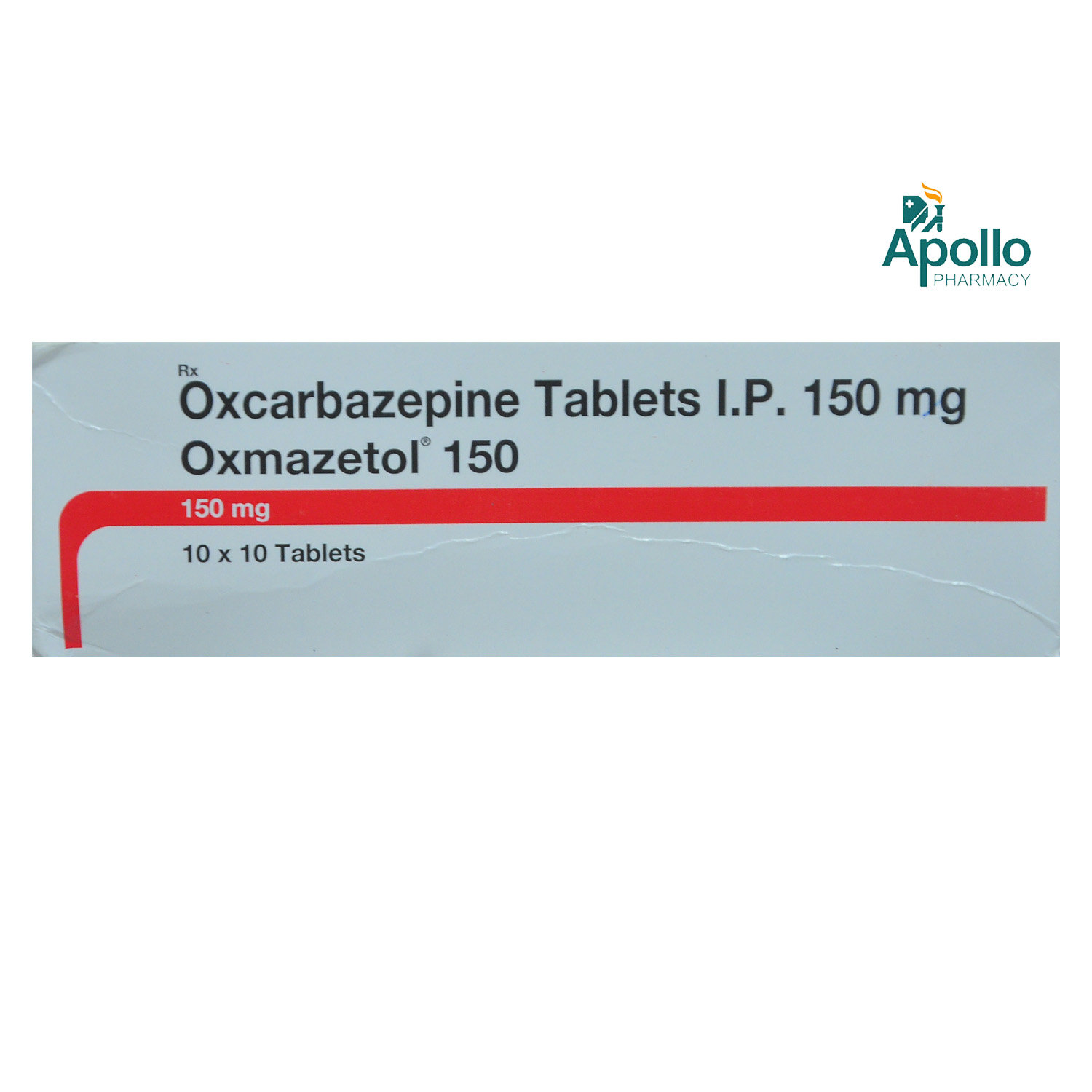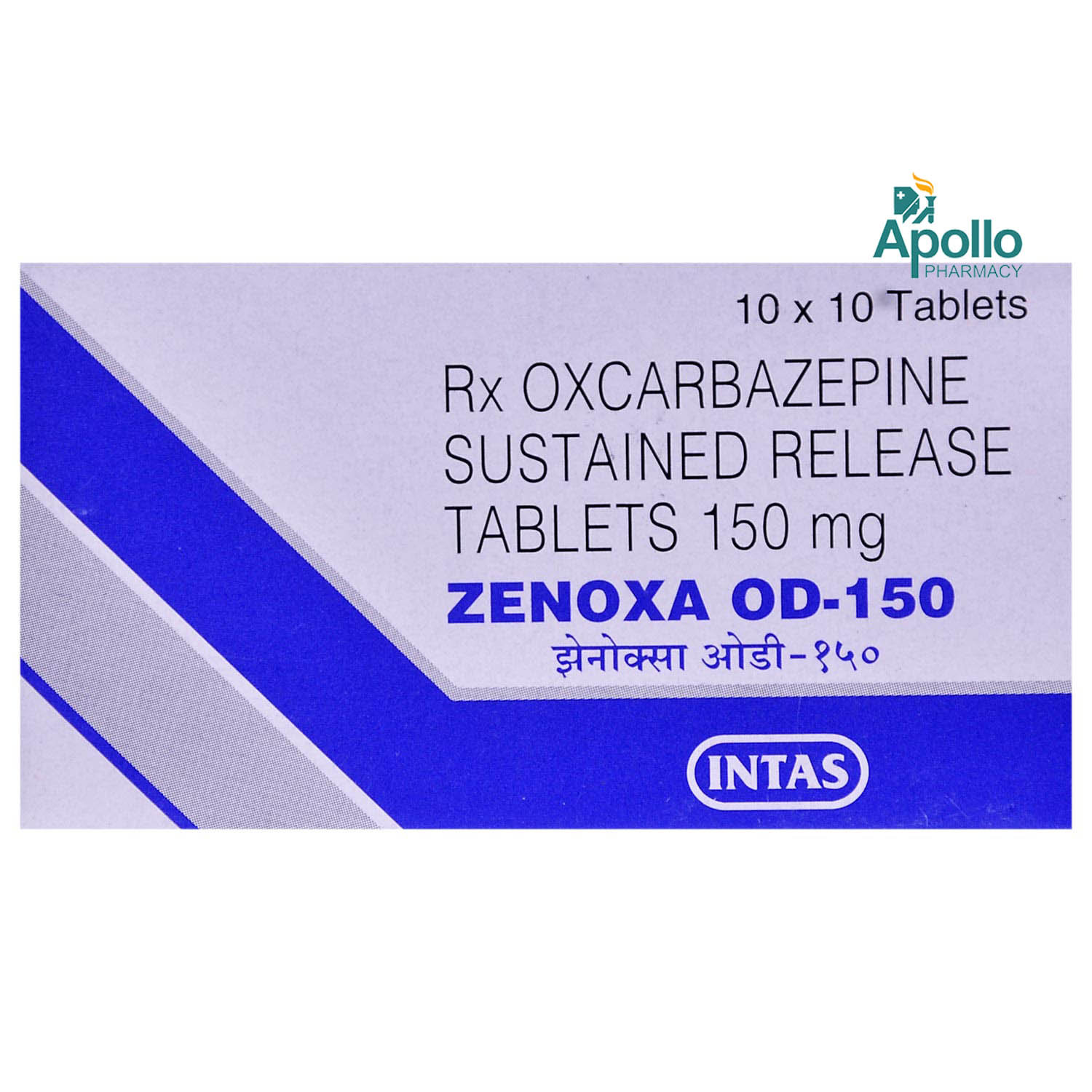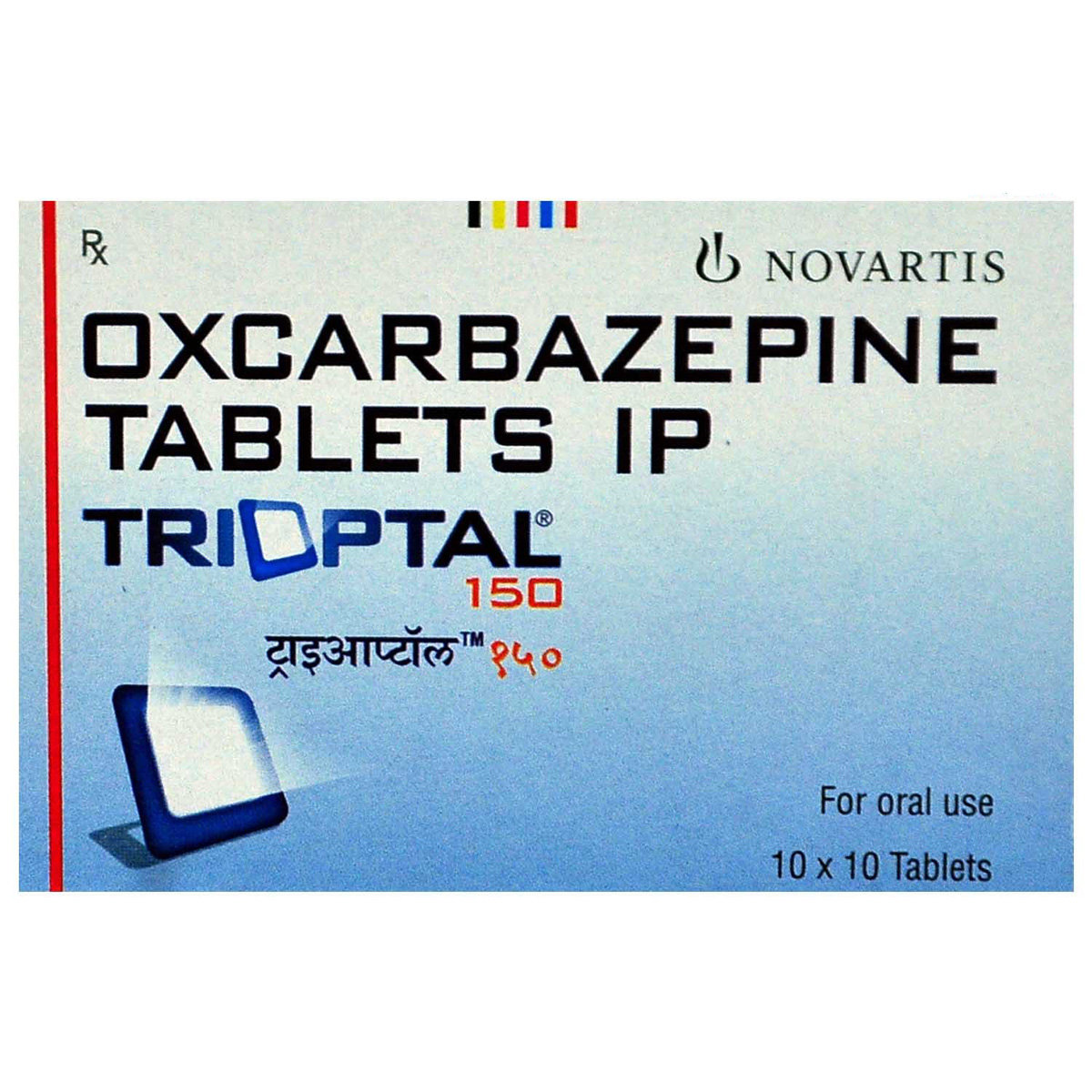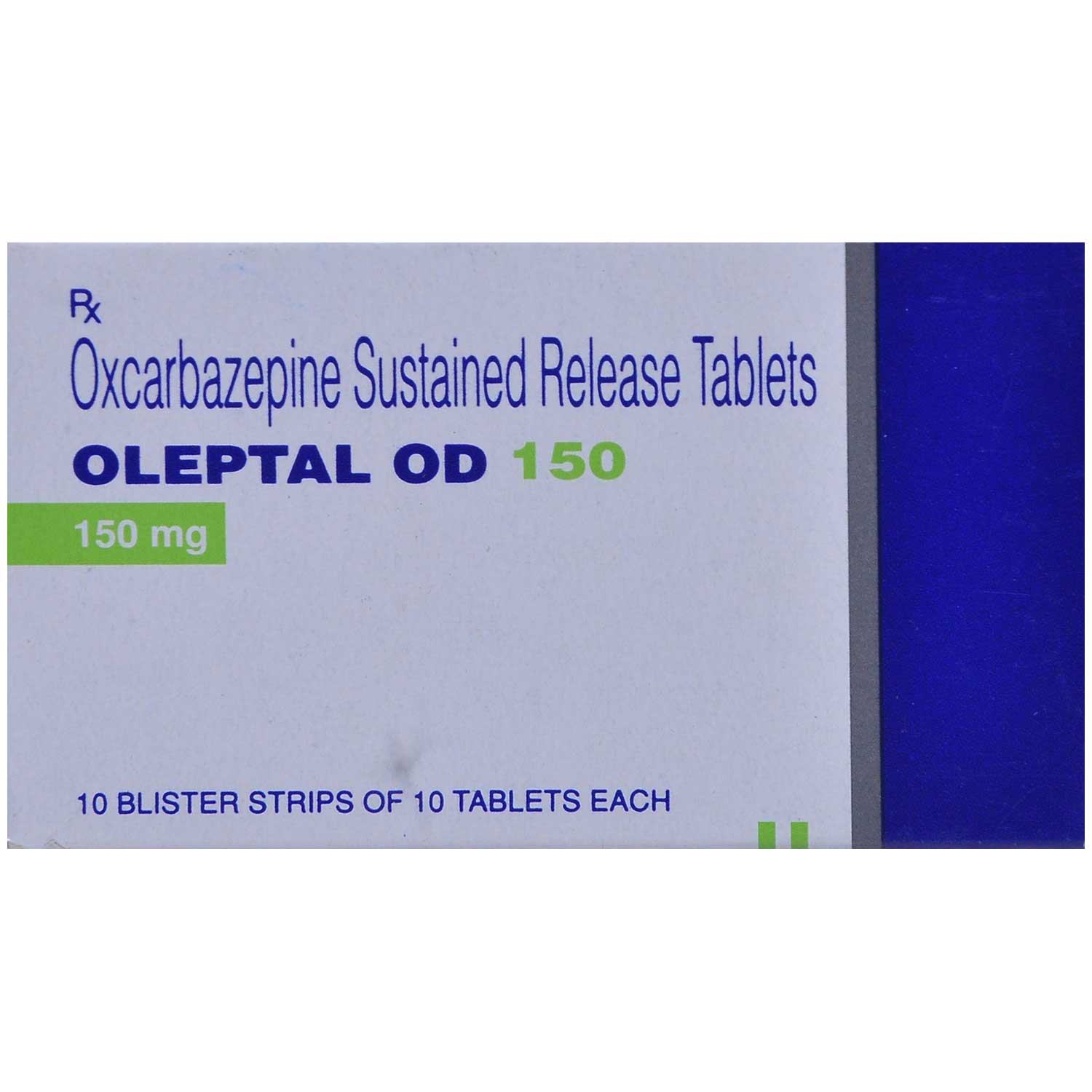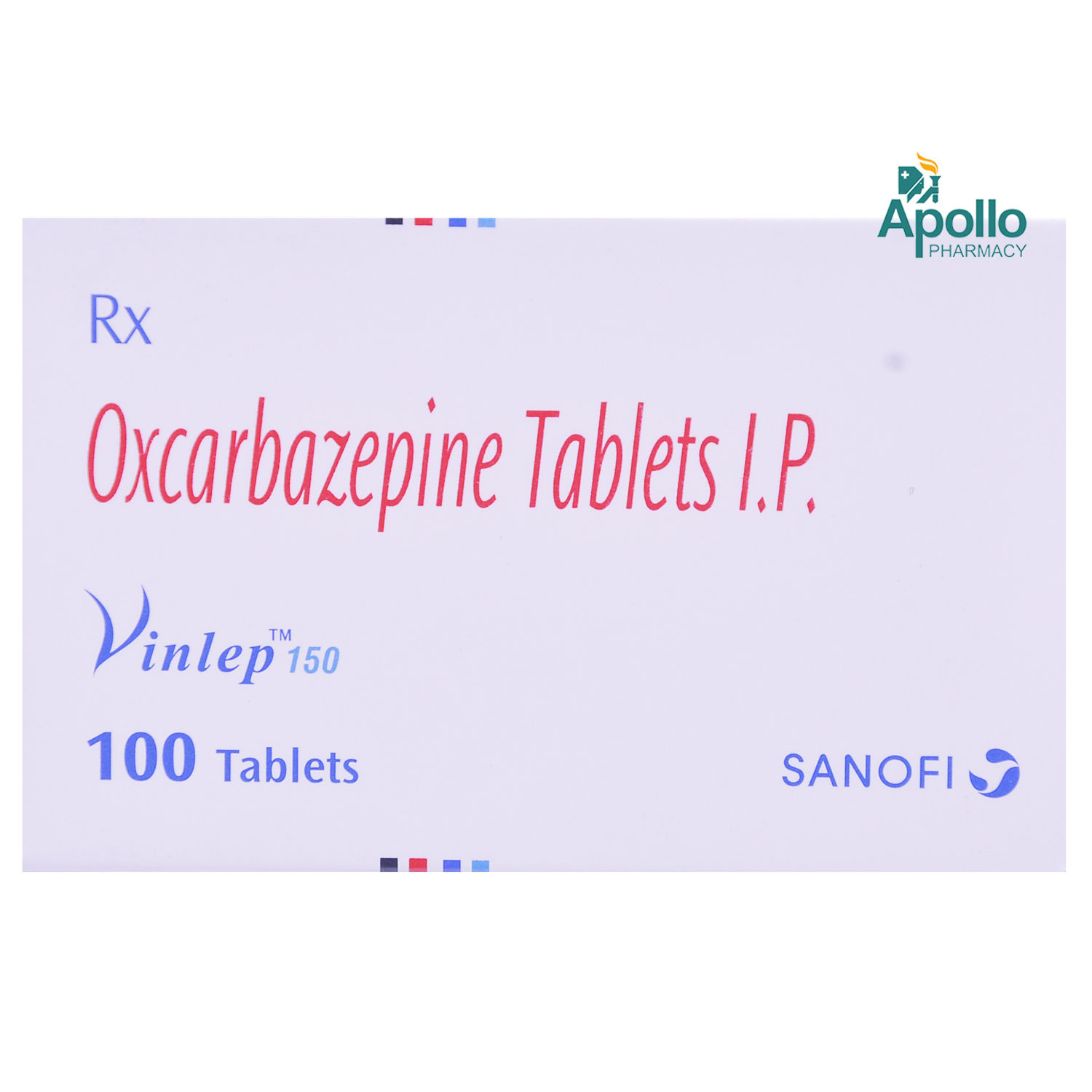Oxcarb 150 Tablet
MRP ₹78.5
(Inclusive of all Taxes)
₹11.8 Cashback (15%)
know your delivery time
Provide Delivery Location
Composition :
Manufacturer/Marketer :
Consume Type :
Expires on or after :
Return Policy :

Secure Payment

Trusted by 8 Crore Indians

Genuine Products
Therapeutic Class
Country of origin
Manufacturer/Marketer address
Author Details
We provide you with authentic, trustworthy and relevant information
Disclaimer
Alcohol
Safe if prescribed
Avoid consumption of alcohol while taking Oxcarb 150 Tablet as it may increase dizziness and sleepiness.
Pregnancy
Consult your doctor
Please consult your doctor if you have any concerns regarding this, your doctor will prescribe only if the benefits outweigh the risks.
Breast Feeding
Consult your doctor
Oxcarb 150 Tablet should not be taken by breastfeeding mothers as it passes into breast milk and could lead to side-effects in breastfed babies.
Driving
Safe if prescribed
Avoid driving as Oxcarb 150 Tablet may cause drowsiness, sleepiness and tiredness.
Liver
Consult your doctor
Dose adjustment may be needed in patients with liver impairment. Please consult your doctor if you have a liver impairment or any concerns regarding this.
Kidney
Consult your doctor
Dose adjustment may be needed in patients with kidney impairment. Please consult your doctor if you have kidney impairment or any concerns regarding this.
Children
Safe if prescribed
Oxcarb 150 Tablet can be given to children aged above 6years if prescribed by the doctor.
Product Substitutes
About Oxcarb 150 Tablet
Oxcarb 150 Tablet belongs to a group of medicines called anti-convulsants or anti-epileptics used to treat epilepsy/seizures/fits. Epilepsy is a central nervous system disorder characterized by a sudden rush of electrical activity in the brain leading to seizures, unusual behaviour, and loss of awareness.
Oxcarb 150 Tablet works by reducing the attacks of seizures or epilepsy by decreasing the nerve impulses that cause fits. Thereby helps in controlling seizures.
You are advised to take Oxcarb 150 Tablet for as long as your doctor has prescribed it for you depending on your medical condition. In some cases, you may experience common side-effects such as dizziness, sleepiness, tiredness, headache, nausea, vomiting, double vision, stomach pain, diarrhoea or constipation, and weakness. You are advised to talk to your doctor if you experience these side-effects persistently.
Please do not stop taking Oxcarb 150 Tablet without consulting your doctor to avoid precipitating seizures. Do not take Oxcarb 150 Tablet if you are pregnant or planning for pregnancy unless prescribed by the doctor. Avoid taking Oxcarb 150 Tablet while breastfeeding as it may cause side-effects in breastfed babies. Oxcarb 150 Tablet should not be given to children unless prescribed. Consult your doctor immediately if you experience suicidal tendencies.
Uses of Oxcarb 150 Tablet
Medicinal Benefits Mweb
Key Benefits
Oxcarb 150 Tablet belongs to a group of medicines called anti-convulsants or anti-epileptics. Oxcarb 150 Tablet is used to treat epilepsy/seizures/fits. Oxcarb 150 Tablet works by decreasing the nerve impulses that cause fits and pain thereby controlling seizures. Oxcarb 150 Tablet is used alone or in combination to treat and prevent partial seizures in adults. Oxcarb 150 Tablet may be used as sole therapy in treating and preventing seizures in children above 4 years or is used in combination in children above 2 years. Oxcarb 150 Tablet does not cause dependence or tolerance.
Directions for Use
Side Effects of Oxcarb 150 Tablet
- Dizziness
- Sleepiness
- Tiredness
- Headache
- Nausea
- Vomiting
- Stomach pain
- Diarrhoea
- Constipation
- Weakness
Drug Warnings
Do not take Oxcarb 150 Tablet if you are allergic to any of its contents. Inform your doctor if you have or had heart problems, kidney and liver problems, if you have low levels of sodium in blood or if you are taking medicines that could lower the levels of sodium in the blood, or if you are using hormonal contraceptives. Do not stop taking Oxcarb 150 Tablet without consulting your doctor to avoid precipitating seizures. Consult your doctor if you are pregnant or planning for pregnancy. Nursing mothers should consult the doctor before using Oxcarb 150 Tablet as it may pass into the breast milk and affect the baby. Oxcarb 150 Tablet should not be given to children unless prescribed. Avoid consuming alcohol along with Oxcarb 150 Tablet as it could lead to increased dizziness and sleepiness. Consult your doctor immediately if you experience suicidal tendencies.
Drug-Drug Interactions
Drug-Drug Interactions
Login/Sign Up
Combining Furazolidone with Oxcarb 150 Tablet can increase the risk of serotonin syndrome(a condition when your body has too much of a chemical called serotonin), further leading to side effects.
How to manage the interaction:
Taking Oxcarb 150 Tablet with Furazolidone is not recommended, as it can result in an interaction, but it can be taken if prescribed by a doctor. However, if you experience symptoms such as confusion, hallucination (seeing or hearing things that do not exist), seizure, extreme changes in blood pressure, increased heart rate, fever, excessive sweating, shivering or shaking, blurred vision, muscle spasm or stiffness, tremors, incoordination, stomach cramps, nausea, vomiting, and diarrhoea, consult a doctor. Do not stop using any medications without a doctor’s advice.
Co-administration of Oxcarb 150 Tablet can increase the effects of Selegiline on serotonin levels (A condition in which a chemical called serotonin builds up in your body).
How to manage the interaction:
Taking Selegiline with Oxcarb 150 Tablet together can possibly result in an interaction, but it can be taken if a doctor has advised it. However, consult a doctor immediately if you experience any symptoms such as confusion, hallucination, seizure, extreme changes in blood pressure, increased heart rate, fever, excessive sweating, shivering or shaking, blurred vision, muscle spasm or stiffness, tremor, incoordination, stomach cramp, nausea, vomiting, and diarrhea. Do not discontinue any medications without consulting a doctor.
When Oxcarb 150 Tablet is taken with Linezolid, it can increase the risk of serotonin syndrome(a condition when your body has too much of a chemical called serotonin), further leading to side effects.
How to manage the interaction:
Taking Oxcarb 150 Tablet with Linezolid is not recommended, as it results in an interaction, it can be taken if advised by a doctor. However, if you experience symptoms such as confusion, hallucination (seeing or hearing things that do not exist), seizure, extreme changes in blood pressure, increased heart rate, fever, excessive sweating, shivering or shaking, blurred vision, muscle spasm or stiffness, tremors, incoordination, stomach cramps, nausea, vomiting, and diarrhoea, consult a doctor. Do not stop using any medications without a doctor’s advice.
Combining Oxcarb 150 Tablet with Procarbazine can increase the risk of serotonin syndrome(a condition when your body has too much of a chemical called serotonin), further leading to side effects.
How to manage the interaction:
Taking Oxcarb 150 Tablet with Procarbazine is not recommended as it results in an interaction, it can be taken if advised by a doctor. However, if you experience symptoms such as confusion, hallucination (seeing or hearing things that do not exist), seizure, extreme changes in blood pressure, increased heart rate, fever, excessive sweating, shivering or shaking, blurred vision, muscle spasm or stiffness, tremors, incoordination, stomach cramps, nausea, vomiting, and diarrhoea, consult a doctor. Do not stop using any medications without a doctor’s advice.
Combining Oxcarb 150 Tablet with Phenelzine can increase the risk of serotonin syndrome(a condition when your body has too much of a chemical called serotonin), further leading to side effects.
How to manage the interaction:
Taking Oxcarb 150 Tablet with Phenelzine is not recommended, as it results in an interaction, it can be taken if advised by a doctor. However, if you experience symptoms such as confusion, hallucination (seeing or hearing things that do not exist), seizure, extreme changes in blood pressure, increased heart rate, fever, excessive sweating, shivering or shaking, blurred vision, muscle spasm or stiffness, tremors, incoordination, stomach cramps, nausea, vomiting, and diarrhoea, consult a doctor. Do not stop using any medications without a doctor’s advice.
When Ranolazine is taken with Oxcarb 150 Tablet, may significantly reduce the blood levels of Ranolazine, which may make the medication ineffective or less effective.
How to manage the interaction:
Taking Oxcarb 150 Tablet with Ranolazine is not recommended as it can lead to an interaction, they can be taken together if advised by a doctor. Do not stop taking any medications without consulting a doctor.
Combining Oxcarb 150 Tablet with Rasagiline can increase the risk of serotonin syndrome (A condition in which a chemical called serotonin increases in your body).
How to manage the interaction:
Taking Oxcarb 150 Tablet with Rasagiline is not recommended as it can result in an interaction, it can be taken if your doctor has advised it. However, if you experience confusion, hallucination(seeing or hearing things that do not exist), seizure, extreme changes in blood pressure, increased heart rate, fever, excessive sweating, shivering or shaking, blurred vision, muscle spasms, stomach cramps, nausea, vomiting, and diarrhoea, contact a doctor right away. Do not discontinue any medications without consulting a doctor.
When Rilpivirine is taken with Oxcarb 150 Tablet, rilpivirine's blood levels may drop noticeably, potentially decreasing its effectiveness.
How to manage the interaction:
Taking Rilpivirine with Oxcarb 150 Tablet is not recommended as it results in an interaction, it can be taken if advised by a doctor. Do not stop using any medications without a doctor’s advice
Combining Oxcarb 150 Tablet with Isocarboxazid can increase the risk of serotonin syndrome(a condition when your body has too much of a chemical called serotonin), further leading to side effects.
How to manage the interaction:
Taking Oxcarb 150 Tablet with Isocarboxazid is not recommended, as it results in an interaction, it can be taken if advised by a doctor. However, if you experience symptoms such as confusion, hallucination (seeing or hearing things that do not exist), seizure, extreme changes in blood pressure, increased heart rate, fever, excessive sweating, shivering or shaking, blurred vision, muscle spasm or stiffness, tremors, incoordination, stomach cramps, nausea, vomiting, and diarrhoea, consult a doctor. Do not stop using any medications without a doctor’s advice.
Combining Tranylcypromine with Oxcarb 150 Tablet can increase the risk of serotonin syndrome(a condition in which a chemical called serotonin increase in your body).
How to manage the interaction:
Taking Oxcarb 150 Tablet with Tranylcypromine is not recommended, but can be taken together if prescribed by a doctor. However, consult a doctor if you experience confusion, hallucination(seeing and hearing things that do not exist), fits, blood pressure alteration, increased heart rate, fever, excessive sweating, shivering or shaking, blurred vision, pain in the muscles or stiffness, incoordination, stomach cramps, nausea, vomiting, and diarrhea. Do not discontinue any medications without consulting your doctor.
Drug-Food Interactions
Drug-Food Interactions
Login/Sign Up
Drug-Diseases Interactions
Drug-Diseases Interactions
Login/Sign Up
Drug-Drug Interactions Checker List
- ARIPIPRAZOLE
- QUETIAPINE
- LURASIDONE
- ZOLPIDEM
- DULOXETINE
- ESCITALOPRAM
- PREGABALIN
- FLUOXETINE
- TRAZODONE
- SERTRALINE
- ERYTHROMYCIN
- HYDROCODONE
- METHADONE
- LAMOTRIGINE
- TOPIRAMATE
- ESOMEPRAZOLE
- ALPRAZOLAM
- CETIRIZINE
Habit Forming
Diet & Lifestyle Advise
- A ketogenic diet (low in carbohydrates and high in fats) is recommended for children with epilepsy. This diet helps in utilizing fat instead of glucose for the generation of energy.
- Atkins's diet (high fat and controlled carbohydrates) is recommended for adolescents and adults.
- Exercising regularly helps in maintaining weight and improving overall health.
- Rest well, and get plenty of sleep.
- Avoid smoking and alcohol consumption.
- Meditation and yoga can help lower stress, decrease pain sensitivity and improves coping skills.
- Have a seizure response plan, this helps those around you know what to do.
- Prepare your living area; small changes may help in reducing the risk of physical injury during a seizure.
- Understand what triggers seizures and try reducing or avoiding them.
- Please pay attention to overall health as it can help in reducing seizure activity.
- Install an alarm or emergency device to get assistance during a seizure attack.
All Substitutes & Brand Comparisons
RX
Lovax 150 Tablet 15's
Lupin Ltd
₹74.5
(₹4.47 per unit)
36% CHEAPERRX
Oxcee 150 mg Tablet 10's
Sigmund Promedica
₹69
(₹6.21 per unit)
12% CHEAPERRX
Carbox 150 mg Tablet 10's
Micro Labs Ltd
₹71
(₹6.39 per unit)
9% CHEAPER

Have a query?
Buy best C.n.s Drugs products by
Intas Pharmaceuticals Ltd
Sun Pharmaceutical Industries Ltd
Torrent Pharmaceuticals Ltd
Alkem Laboratories Ltd
Abbott India Ltd
Cipla Ltd
Alteus Biogenics Pvt Ltd
Micro Labs Ltd
Lupin Ltd
Ipca Laboratories Ltd
D D Pharmaceuticals Pvt Ltd
Icon Life Sciences
Mankind Pharma Pvt Ltd
Tripada Healthcare Pvt Ltd
Arinna Lifesciences Ltd
Linux Laboratories Pvt Ltd
East West Pharma India Pvt Ltd
La Renon Healthcare Pvt Ltd
Talent India Pvt Ltd
Tas Med India Pvt Ltd
Zydus Healthcare Ltd
Cnx Health Care Pvt Ltd
Eris Life Sciences Ltd
Leeford Healthcare Ltd
Emcure Pharmaceuticals Ltd
Macleods Pharmaceuticals Ltd
Sigmund Promedica
Aristo Pharmaceuticals Pvt Ltd
Dr Reddy's Laboratories Ltd
Troikaa Pharmaceuticals Ltd
Consern Pharma Ltd
Zydus Cadila
Shine Pharmaceuticals Ltd
Wockhardt Ltd
Ardent Life Sciences Pvt Ltd
Crescent Formulations Pvt Ltd
Theo Pharma Pvt Ltd
Reliance Formulation Pvt Ltd
Ikon Pharmaceuticals Pvt Ltd
Propel Healthcare
Neon Laboratories Ltd
Jagsam Pharma
Msn Laboratories Pvt Ltd
Morepen Laboratories Ltd
Pulse Pharmaceuticals
Sanofi India Ltd
Med Manor Organics Pvt Ltd
Hetero Healthcare Pvt Ltd
Novartis India Ltd
Crescent Therapeutics Ltd
Elder Pharmaceuticals Ltd
Solvate Laboratories Pvt Ltd
Akumentis Healthcare Ltd
Mova Pharmaceutical Pvt Ltd
Psyco Remedies Ltd
Tripada Lifecare Pvt Ltd
Ajanta Pharma Ltd
Cyrus Remedies Pvt Ltd
Medishri Healthcare Pvt Ltd
Cadila Healthcare Ltd
Glenmark Pharmaceuticals Ltd
Matteo Health Care Pvt Ltd
Hbc Life Sciences Pvt Ltd
Lyf Healthcare
Matias Healthcare Pvt Ltd
Mesmer Pharmaceuticals
Alembic Pharmaceuticals Ltd
Capital Pharma
Crescent Pharmaceuticals
Medopharm Pvt Ltd
Alniche Life Sciences Pvt Ltd
Kivi Labs Ltd
Talin Remedies Pvt Ltd
USV Pvt Ltd
Quince Lifesciences Pvt Ltd
Solis Pharmaceuticals
Infivis Life Care
Zuventus Healthcare Ltd
Cadila Pharmaceuticals Ltd
Pfizer Ltd
Wallace Pharmaceuticals Pvt Ltd
A N Pharmacia Laboratories Pvt Ltd
Blue Cross Laboratories Pvt Ltd
Jenburkt Pharmaceuticals Ltd
Lia Life Sciences Pvt Ltd
Mano Pharma
Medley Pharmaceuticals Ltd
Primus Remedies Pvt Ltd
FDC Ltd
Maneesh Pharmaceuticals Ltd
Apex Laboratories Pvt Ltd
Gagnant Healthcare Pvt Ltd
Ozone Pharmaceuticals Ltd
RPG Life Sciences Ltd
Strides Shasun Ltd
Unichem International
GlaxoSmithKline Pharmaceuticals Ltd
Kuresys Labs Pvt Ltd
LA Pharma
Trion Pharma India Llp
Recommended for a 30-day course: 4 Strips

_0.jpg?tr=q-85)


